By the end of the ’90s, Cadillac was in a dire situation. If it kept on its path, there was absolutely no room to grow. The average buyer age in 1998, as reported by Forbes, was 64, and sales were in enough of a low spot that Cadillac was caught faking figures for 1998, with Automotive News reporting that Lincoln had actually taken the domestic luxury brand crown that year. The brand had to change, and while the Escalade was a lifeline, the most obvious path forward was to go where the product was hot by building a proper compact sports sedan good enough to rival the Germans.
Entry level cars had historically been a notorious sore spot for GM’s luxury division. The Cimarron was, by-and-large, a mistake, a hastily reworked economy car aiming far above its league. It became the butt of jokes, and once it went off sale at the end of 1988, it would be another eight years before Cadillac gave the compact executive car thing another shot.
This time, it was with a rear-wheel-drive Opel that drove reasonably well, but a few factors conspired against the Catera. For one, Cadillac was still in its frumpy phase, and the early egg-crate grille clashes with the jellybean silhouette. This was fixed with a facelift, but the bigger issues were competition and marketing. Shortly after the Catera launched, BMW dropped the era-defining E46 3 Series, a car that vacuumed all the air out of the sports sedan room. At the same time, who approved “The Caddy That Zigs” as an ad campaign?
It was time to incinerate the old script, and while the launch of the first Escalade bought Cadillac a lifeline, the real hard work would start with the Catera replacement. Welcome to the Cadillac CTS.
The Big Bet
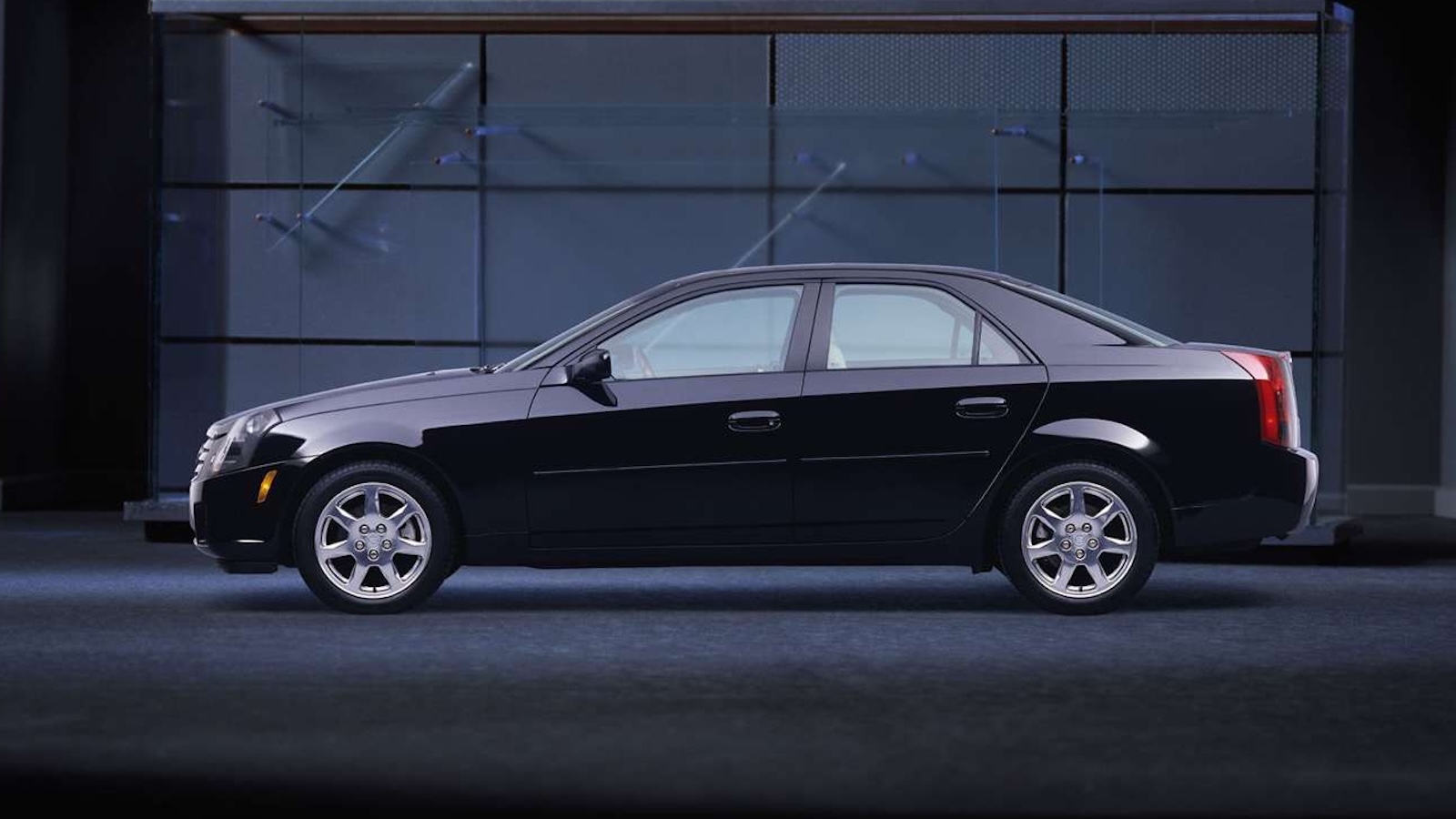
The plan for the CTS came together astonishingly quickly. As Autoweek reported, the first full-sized sketches of what would be the Catera-replacement were shown to brass in February of 1998. The first full-sized foam model? That was ready by May. Not only was it GM’s first model of the sort with functional lighting, it met what seemed like an impossible deadline.
“When we pulled off the cover, we got a round of applause,” [Chief designer Wayne] Cherry says. With a laugh, he adds, “That may have been for how fast we did it.”
The first full-scale foam model of the CTS showcased an entirely new design language, radically angular and unlike anything Cadillac had produced before. While the rest of the industry was evolving the jellybean language of the ’90s, Cadillac was doing something it called Art & Science. It was a huge risk, one that would need a $4 billion investment in a new rear-wheel-drive architecture, new models, and a new plant, but Cadillac was getting absolutely trampled at the time. It really was a case of evolve or die.

Roughly three years later, the production CTS was ready to be shown to the world, and it was a hard break from tradition. Not only was it the first stick-shift Cadillac since the Cimarron, it had a chassis tuned on the Nürburgring, looked like nothing else on the market, and was enough of a shock to almost instantly fade the Catera out of everyone’s minds. Sure, the interior still had some cheapness to it, and the old-school GM tilt column hampered the driving position somewhat, but when Car And Driver compared it against the rest of the segment, the magazine came away largely impressed.
Make no mistake, this is the best Cadillac ever. Get past the styling that, to some, has been carved from a bar of soap, and underneath lies a first-rate effort to bring Cadillac into the 21st century. The target is BMW. It is still wide of that mark. A bull’s-eye, perhaps, on a 10-year-old 7-series sedan, but not against a current 3- or 5-series from Munich.
But Cadillac is now truly in the hunt, and the CTS is only an opening shot.
This truly was a turning point, the moment Cadillac really stopped looking back and started looking at the future. Less chrome, more dark finishes. Less float, more precision. The brand had a new mission, one of developing world-class sports sedans that, in tandem with the Escalade, would try their hardest to shake off a Boca Raton image. Being featured in “Bad Boys 2” and “The Matrix: Reloaded” certainly didn’t hurt.
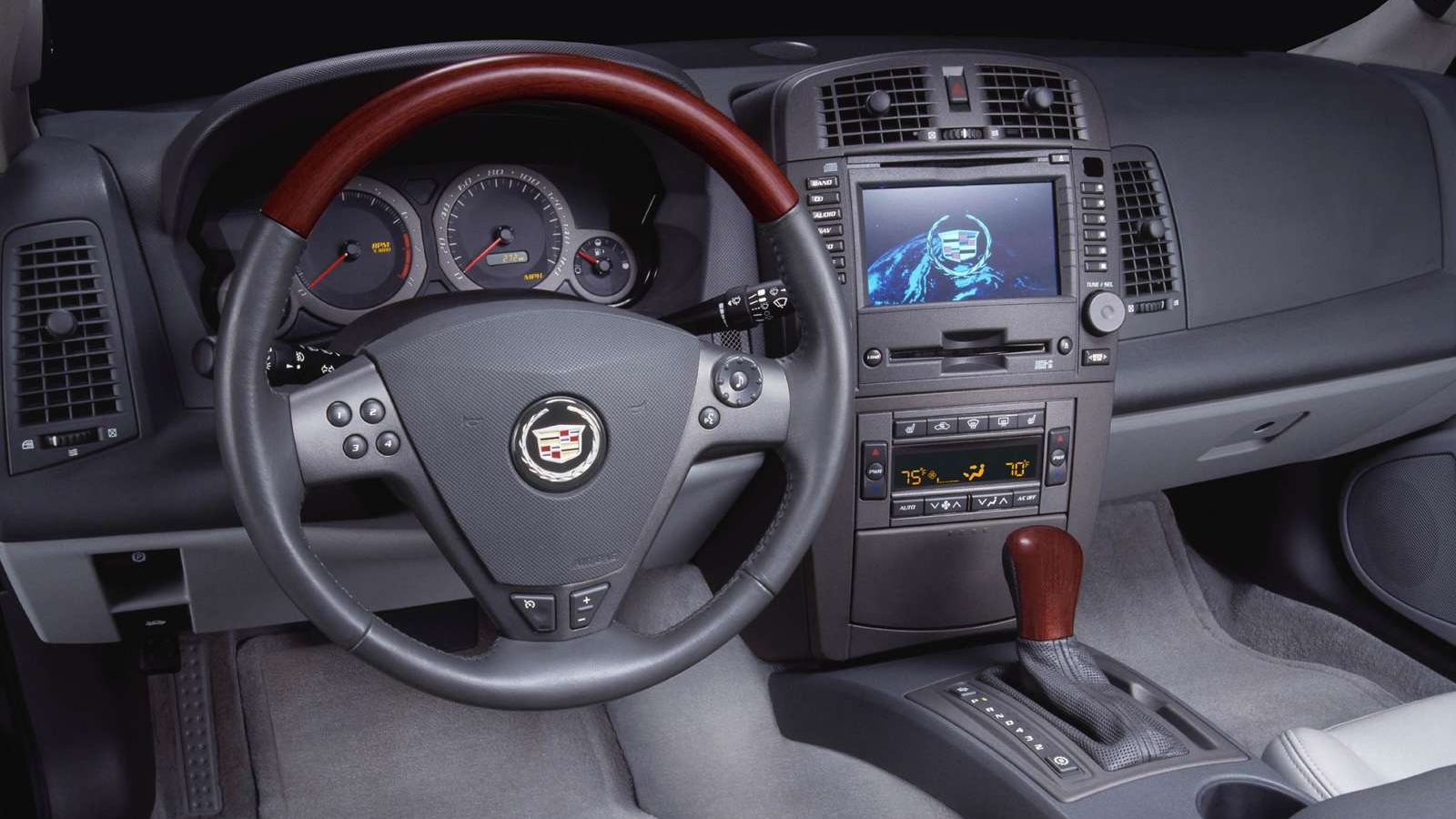
Over time, the CTS would see the sort of incremental improvements expected from a product GM tried hard with. A 260-horsepower 3.6-liter V6 appeared on the options sheet for 2004 and supplanted the original 220-horsepower 3.2-liter V6 for 2005, an Aisin six-speed manual replaced the five-speed Getrag for 2005, sales channels spread to Europe and Japan, and touches like more legible gauges and a cleaner steering wheel control layout helped usability. However, arguably the most memorable arc of the original CTS was when Cadillac took an even bigger swing.
The Corporate Hot Rod

If you were going after BMW, Mercedes-Benz, and Audi back in the 2000s, you were going to need something fast. If you listened carefully in finance districts around the world, you’d hear M cars, AMGs, and the like being revved up in underground garages, the left-lane chariots of power brokers with wild streaks and city boys seeking a thrill. Cadillac had never really made a performance car of this sort before, but the CTS was the perfect place to give it a shot. The name of the sub-brand? Cadillac went with a pretty good letter: V.
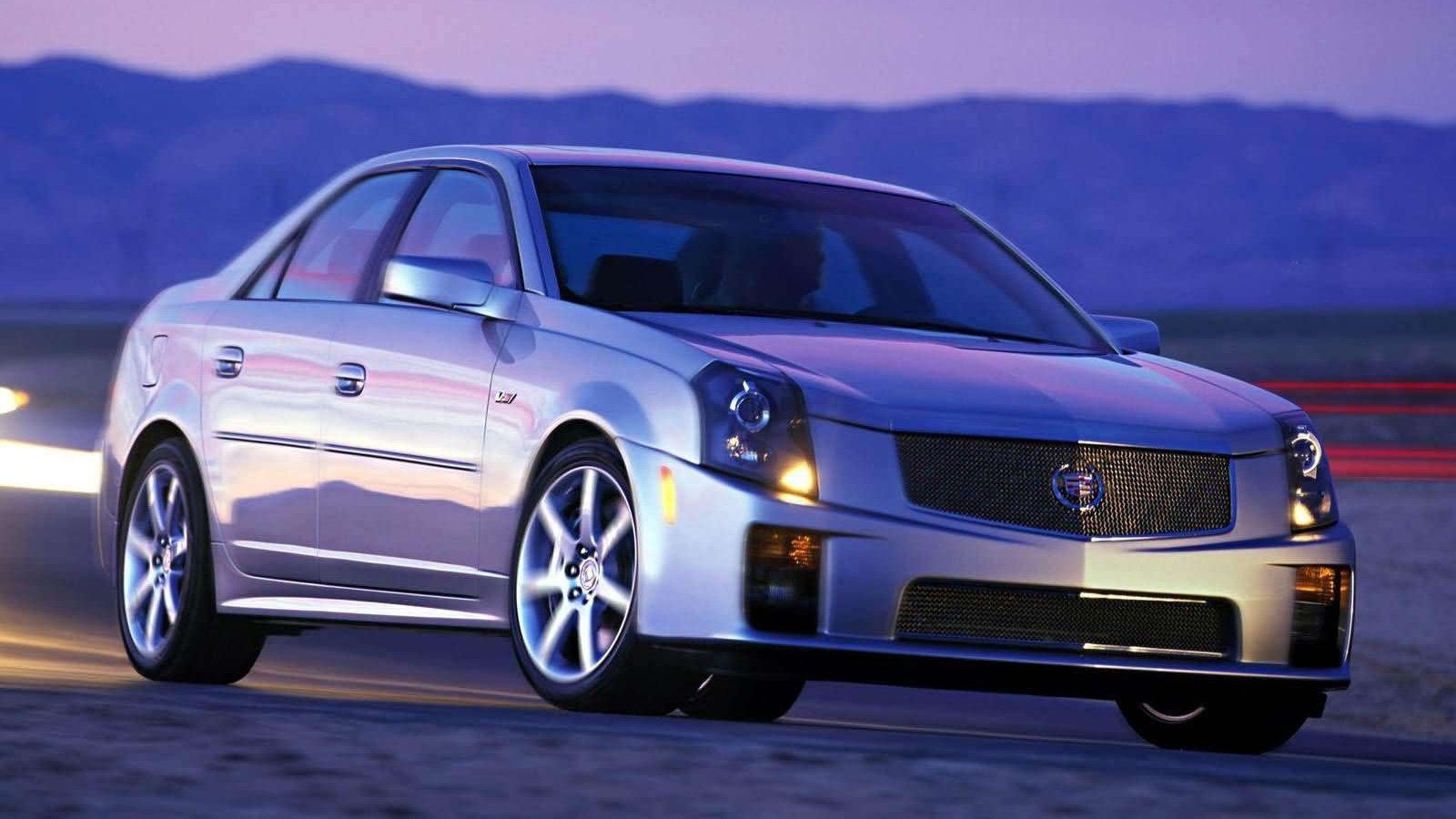
To create the original CTS-V, Cadillac raided the parts bin where it could, absconding from the warehouses with the 5.7-liter LS6 V8 from the C5 Chevrolet Corvette Z06 and Tremec’s T-56 six-speed manual transmission under its jumper. We’re talking 400 horsepower and 395 lb.-ft. of torque, 60 more horsepower than an Audi S4 and 38 more than a C 55 AMG. However, Cadillac didn’t stop there. Four-piston Brembo calipers clamping 14-inch discs hauled the CTS-V down from triple-digit speeds, 46 mm monotube dampers joined forces with 27 percent stiffer springs and a larger front anti-roll bar to maintain body control, and square 245-section Goodyears did what they could to manage grip. Cadillac changed so much that even the bolt patterns for the wheels were different, with the CTS-V being one of the few passenger cars to feature six-lug hubs.

The result was a sharp-looking midsize sports sedan that could sprint to 60 MPH in under five seconds, wouldn’t stop pulling until 163 MPH, and was properly capable on a circuit. Launched for the 2004 model year, it meant business, and this executive muscle car with BMW-troubling handling instantly had people raving. As Car And Driver wrote:
Watch out, children, fusty old GM is raising hell. The power is loud, violent, and addictive. The steering is sharp, the suspension is in control, and the brakes are a strain on tendons. You touch bliss in a drift out of an apex, the grille pointing where your right foot aims it. Holy Saint Herman of Alaska—the traction-control-disable button is right there on the steering wheel! You can boot GM’s lawyers out of the car with one thumb flick. No need to, though, since the computer allows lots of sideways horseplay before it intervenes. Straight-line acceleration is crimped by spasmodic axle hop, and the chintzy interior (pre-Lutz) should be shoveled. But GM’s being bad is really quite good.
Now, that’s not to say that everything was perfect with the first-generation CTS-V because there were some teething issues. That early Car And Driver test was hampered by an early oil temperature display software issue, but the biggest issue with the original CTS-V was what happened if you tried to launch it. Dumping the clutch was met with violent, areola-shaking wheel hop, to the point where some owners grew familiar with how much a replacement differential cost. A whole aftermarket sub-sector appeared to mitigate the likelihood of breaking rear end components, but so long as you abstained from hard launches, the CTS-V was a sweet machine.
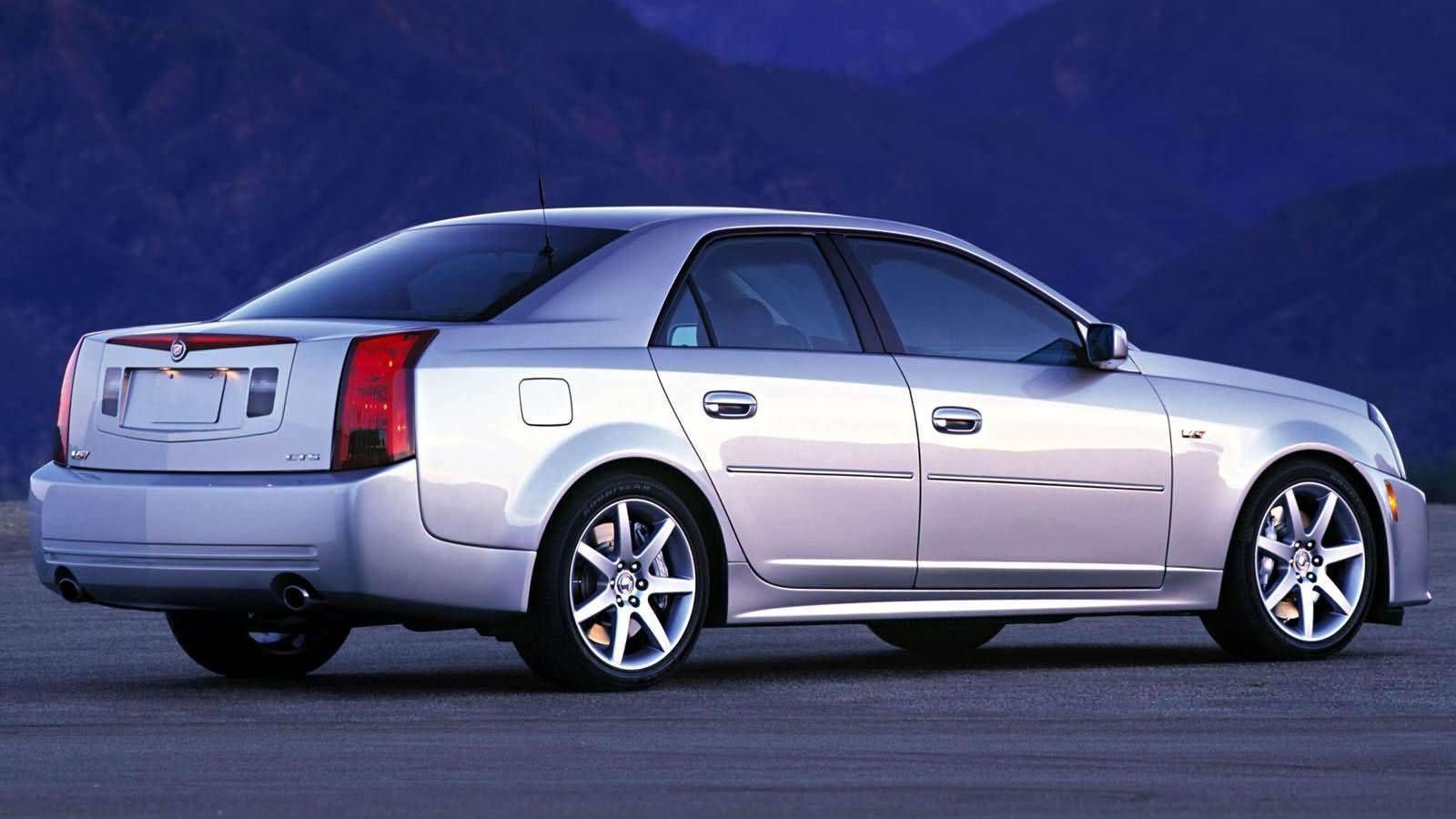
Plus, it got even better in 2006 with the arrival of the six-liter LS2 V8. Sure, it made the same 400 horsepower and 395 lb.-ft. of torque, but the torque peak arrived 400 RPM sooner for a wider power band. The rear end also gained some much-needed upgrades for hard driving, beefier half-shafts and a stronger differential that was far more difficult to blow up.
The Legacy Of The CTS
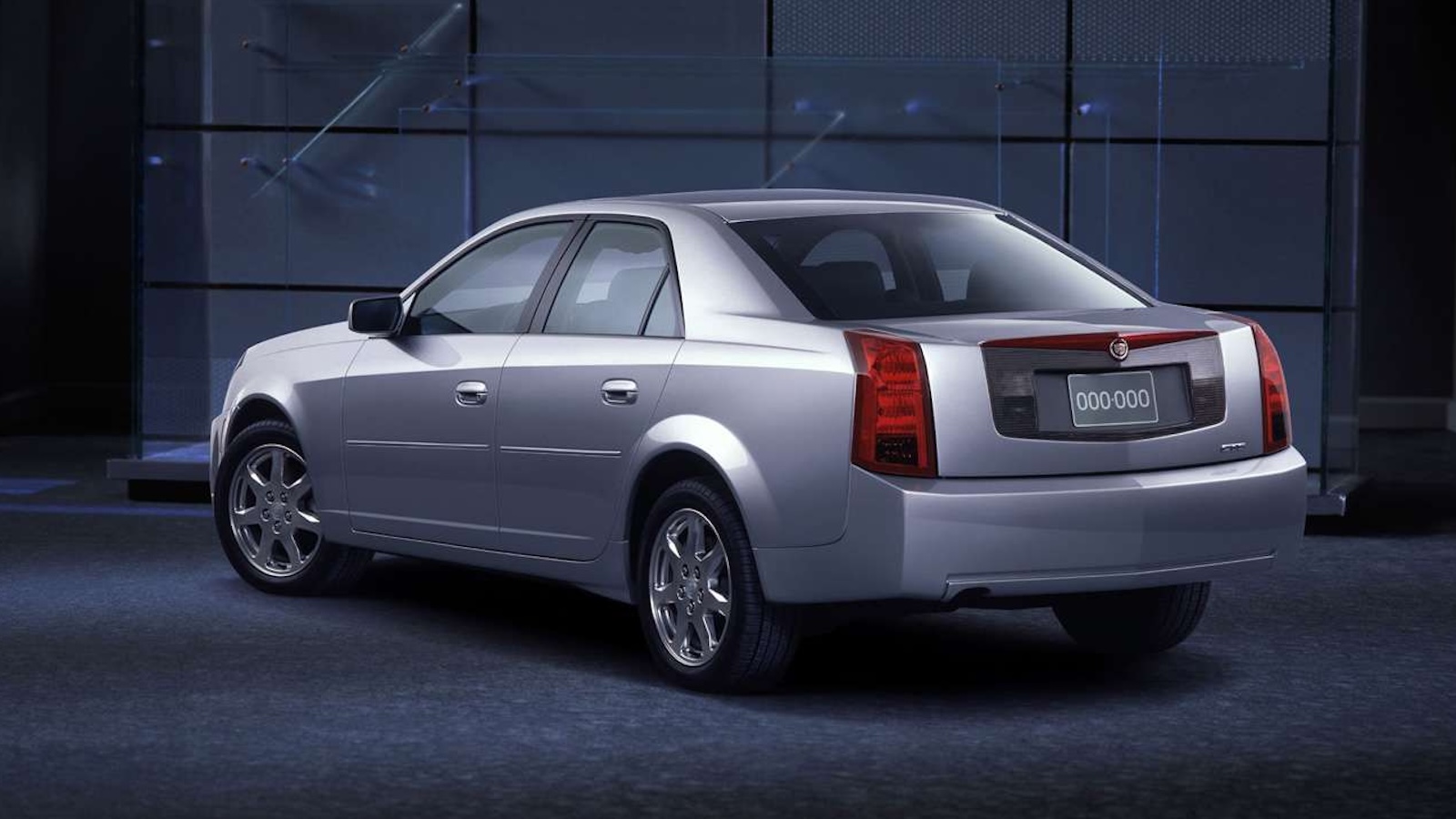
It’s easy to forget how groundbreaking the CTS was, but it was the starting point to Cadillac making some truly epic cars. The 556-horsepower supercharged stick-shift second-generation Cadillac CTS-V wagon is one of my favorite cars of all time, the third-generation CTS-V was absolutely ludicrous thanks to the 640-horsepower LT4 engine from the Corvette Z06, and then there are the performance sedans of the moment, the CT4-V Blackwing and CT5-V Blackwing. It’s wild to think that the most coveted new fast four-doors are American, but the Blackwings are that good.
Then there’s the styling. The Art & Science motif has coursed through Cadillac’s veins for nearly a quarter-century, refined into a series of signature vertical and horizontal elements that offer distinction while rarely toeing the line of vulgarity. Guess what? It worked, to an extent. Cadillac’s average buyer age has been slowly trending downward since the early 2000s, with GM Authority reporting an average buyer age of 54 in 2023. Plus, the CTS immediately buoyed sales. Over the Catera’s production run, only 94,801 were sold, with the last units not making it off dealer lots until 2003. In contrast, over the six years the original CTS was in production, Cadillac sold 317,966 entry level sports sedans. Let that sink in.
While Cadillac’s sports sedan reign won’t last forever, given the brand’s intention of an electric future, it helped do what it needed to do. Sure, the Escalade gets all the credit, but it’s worth remembering that the CTS also changed Cadillac in a massive way.
Top graphic image: Cadillac
Support our mission of championing car culture by becoming an Official Autopian Member.

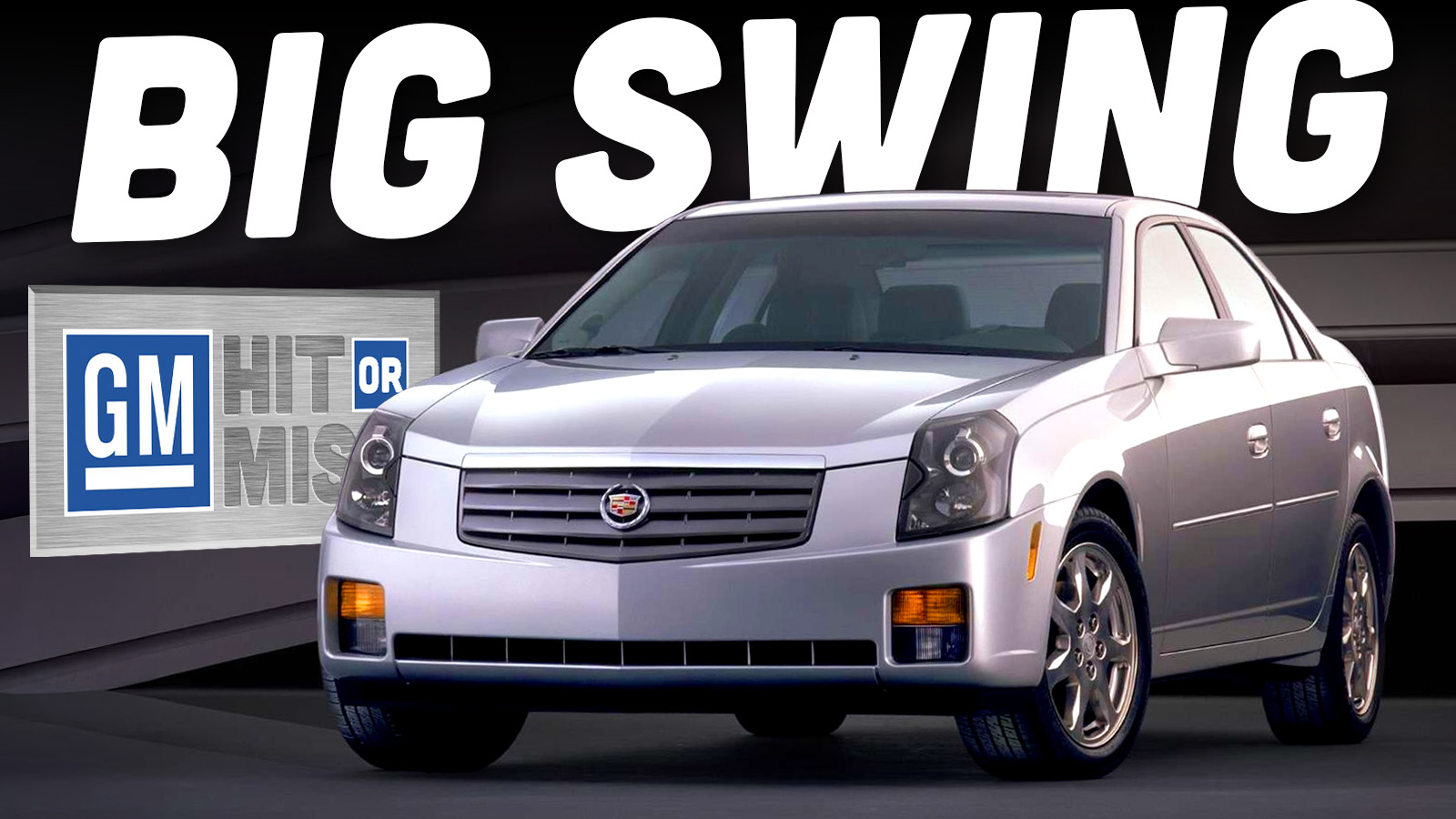







So what cars does Cadillac sell now that they canceled CTS, ATS and STS?
I’m looking for something comfy and using little fuel, 87 octane if possible
.
My mom had a 1st gen Caddy SRX with the Northstar (2wd). It was basically a lifted wagon CTS with a smaller V8. By then, all the Northstar issues had been resolved, and it was a *hoot* to drive. It was really the best driving SUV from that era. Took a group of friends to Six Flags in it (it fit 7!) and they were surprised by how quick we got there ???? It had a great exhaust noise for a stock Caddy. Only real drawback is that it seemed to get 13mpg no matter what you did with it. It was also the first car any of us ever bought that had a touchscreen on it which was *fancy*. But the Nav was quite sassy in it (also a bit fitting), if you ignored a turn or went the wrong way than it said more than once in a row, it would angrily say “NAVIGATION WILL SEASE FROM THIS POINT” and turn off the nav.
My Pops was an Olds man. He grew up on a ranch in the Depression, worked hard his whole life, and his philosophy about credit was, ” If you can’t pay cash for it, you don’t need it. There are a lot of gopher holes between need and want. Watch you don’t lame your horse for wanting.” (Lay-a-way at K-marts and the like were exempt; you didn’t get your grubby mitts on the merch until you finished making payments, so, technically, he was correct.) His last Olds was a 1998 88 LS for my mom to drive during the week, and out of town trips (which I now own after my mom voluntarily up her license at 89; my brother and I dodged a bullet on that one!), of course, paid for in cash. His daily driver was one of the work trucks from our famiy business, which slowly became more “luxurious” over time.
When he was diagnosed with a terminal illness, I offered to buy him a 2005 CTS, because he always secretly wanted a Caddy, but he didn’t want to “show off” to his seven brothers and sisters. A friend of mine was the sales manager at the dealership, which also sold Olds and was same dealership that sold to Pops, so he let me take the CTS on a weekend test drive. Pops was much more practical than myself: he never got as emotionally attached to his cars, even after owning a 1963 Impala SS, 300 hp 327, powerglide and A/C! (My older brother, also not a car guy, got it, ran it into the ground, and traded it in for a Toyota Camry after college. Philistine.) Pops immediately fell in love with the CTS, the gooey, doe-eyed love only found in sappy rom-coms. So did I. Even with the standard GM cocoon of plastic, the CTS stomped a mudhole in the ass of the “USS Rocket 88”, then kicked it dry. My Pops lit up like a Googie inspired Route 66 neon sign when shifting gears, even though he had long ago allowed himself the extravagance of an automatic transmission and (GASP) air-conditioning (we live in the desert SW. How we avoided heat stroke all those years…). For a moment, all 73 years of burdens melted away, and the merry prankster from my youth popped out like Peter Pan spying Captain Hook. He took my mom out, turned off the traction control, dumped the clutch and laid a patch right in front of the house. She was not amused.
The last time I saw the merry devil dancing in his eyes was in college, when I bought a used 1985 Mustang LX 5.0 5-speed. After roasting the tires in a smoky launch, he said, “You’re gonna kill yourself in this machine, boy, but I know why you bought it. Apple don’t fall far!”
Alas, he declined the offer of the CTS, he passed soon after, and life filled up with needs, so wants got shelved to avoid those gopher holes. The Kiddo graduates college in December (a semester early; apple don’t fall far) and the house gets paid off in a year. I wonder if I can find a used car lot with a CTS that offers Lay-a-way…
Thank you, Cadillac, for stepping up and building a car that people want, not just need (I suppose Cadillac customers need them for some purpose). And thanks, Kip, wherever you are, for overlooking the little bits of melted tire I couldn’t get off of the rear fender wells.
Cars are great, but cars are best when cars are about people. Thanks for the story.
An exec got one of these when they first came out. I had read about them in the car mags and was happy GM was going hard. Then, when I heard it rumbling through the parking garage at work, I knew that I had to have one someday…
That day came in 2010. I bought a 05 CTSV that – like a true idiot – totaled within 3 months. I replaced that with an 04 CTSV that I still have. Its been a delight.
Yeah interior buttons flake, plastic is hard, panel gaps this that. Sure it does not even close to an Audi or whatever of same era, etc……
But I could care less when sliding sideways with bald eagles flying out the tailpipes. The thing wails hard, pulls like a heavy breathing LS should, loves bouncing off the rev limiter, and it will shred tires and do this dance all day.
Reliable AF. Thats the key and why they’re great. Maintenance?? Change the oil. Other fluids every 5 years, IDK. It just works. Gen 1 Vs are out there with 200k + miles still rocking.
Address the diff!! When I got it I felt that wheel hop. You can blow up the diff if you try to launch it like a drag car. But it can be made much better with a few things.
1st mods were a differential / subframe tie in brace, a $20 skip shift eliminator, and a Magnaflow cat back that I realized was still too quiet, so I deleted the muffler section. (It already had a K&N intake kit when I purchased it.)
Hold down the traction control button 5 seconds and it disables all stability that easy. Lets you drift your heart out like a fool. With the diff brace, you can drop the hammer and leave black stripes down the street like a jerk in a Camaro. This car makes me drive like a jerk sometimes, its OK, we’re all human, just be safe dammit! It still gets 25 mpg if you drive it normal. Mine looks stock aside from 275s in the rear so its very much a sleeper when you push in the clutch.
3 years back I gave it the now standard LS mod recipe to get another 100hp out of it. Cam, headers, injectors, 93 octane tune with HP tuners. 426whp. Dropped the subframe and did all new bushings, cradle brace, engine trans mounts etc, making it like ‘new’ again.
Sorry for rambling. I could go on and on why these are awesome. They hold the family too, its a midsize car, NOT a compact like the article said, same wheelbase a the 2004 5 series IIRC.
Go treat yourself to a reliable bad ass winner of a car- they’re under 20k for a nice one 🙂
Trust me, you weren’t rambling., especially compared to my posts. I plan to treat myself to a used example once my long-term financial obligations have been met. From my previous experiences, the CTS appears to be 20 pounds of fun in a 10 pound sack, and I can probably do most of the ordinary long-term maintenance myself. A used one in good shape also means that the previous owner took the hit to provide me with a smooth journey.
Go for it sir. You will like it!
It’s a classic
This car is really good, but I would like to raise several points.
One, is that early 3.6 V6 engines DID have problems. Timing chain issues were common (and the engine is NOT easy to work on too). As for the 3.2 V6, I am not sure what problems it had, but it would have had its fair share.
Early model CTS-Vs also were prone to valve spring issues that can cost an engine, aside from the rear differential problems. This I believe was fixed sometime in the model’s run.
Aside from those two, you are NOT getting a car that is better quality either. The Germans and Lexus both outclass it in that regard. The IS is a superior car quality (and in the 00s, reliability wise), but also costs more in the used market.
Mercedes Benz and Audis + BMWs cost way less.
But the difference between a Cadillac and the Germans is , simply put, for most models, the maintenance costs.
Later models of the CTS -V did NOT have to deal with excessively expensive repairs (even with their own issues) that you would have to for the Germans. So, no VANOS problems, no N63 issues, and the like.
The CTS-V is the perfect combination, for me at least (yes, I won’t take that many arguments), of simplicity and raw performance. You never need to be that anxious and at least a used example being desirable vs depreciated German performance cars (also desirable, that need RIGOROUS maintenance to get to the 300k mile mark), shows that reliability does not need to suffer at the hands of performance.
Costalottaeurophobia: Fear of expensive luxury car repairs. My best friend bought a second-hand M-B 230SLK Kompressor from his brother-in-law. It was a stick and the BIL had back surgery, so he was restricted from three pedal driving. That car was a hoot! Best friend and I were roomies in college, when I had a used (well used; abused is not an unreasonable adjective) 1985 Mustang LX 5.0 5-speed that we thrashed like we were beating a rabid wolverine. The CLK made the LX look like a Model T. Until. Until the supercharger crapped the bed. Under warranty. Twice. When he saw the out of warranty cost of repairs and maintenance (the car came with complementary maintenance, transferred to him from his BIL), my buddy dropped that SLK like a fresh dog turd two months before the warranty expired, bought a Chevy Volt, and has beenTeam EV ever since.
His experience has influenced all of my subsequent vehicle purchases, especially when it comes to research before the fact. I buy used vehicles, usually with cash, and I tend to gravitate to autos that can be maintained by me or my loyal minions with the tools already in my possession, or ones that can be rented on the cheap.
My boss had me drive his CTS-V to the dealership for something. I didn’t really let it rip on the highway for fear of a speeding ticket in someone else’s car but did test the acceleration. It was a great car.
I have a BMW i3 that is my take home vehicle (it’s good to be the King). I have encouraged all of my staff to hammer the throttle when they are taking it out for the first time so they don’t feel like they have to sneak around to get their ya-yas, because I enjoy that rush every time I get on the freeway.
I was considering Volvo again for my next EV purchase but Cadillac is killing it with their EV lineup. I remember when I watched Matrix and the chase on the highway featuring this car, I was impressed how modern it looked. History is repeating with their EVs, they are something that no one else is doing.
They are, and interestingly they are not completely beholden to the $7500 tax credit to do it….
Once I am done with my i3, Cadillac EVs will definitely be on my shopping list.
Yes, everyone is jealous that Escalade, for its huge size and weight, only seats 2 in the back.
Yuck